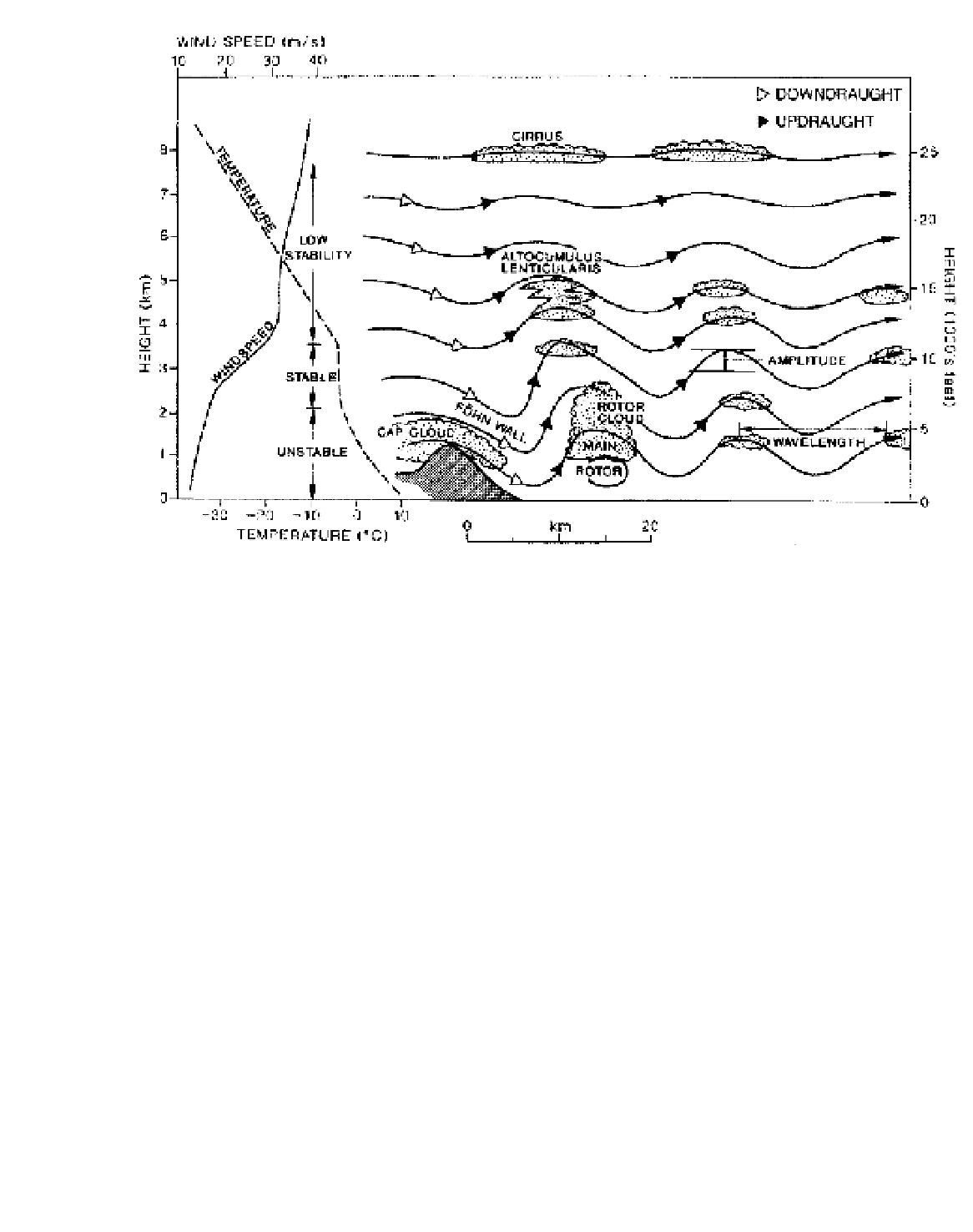Geoscience Reference
In-Depth Information
Figure 6.13
Lee waves and rotors are produced by airflow across a long mountain range. The first wave crest usually forms less than
one wavelength downwind of the ridge. There is a strong surface wind down the lee slope. Wave characteristics are determined by
the wind speed and temperature relationships, shown schematically on the left of the diagram. The existence of an upper stable layer
is particularly important.
Source
: After Ernst (1976), by permission of the American Meteorological Society.
excess of 40 to 50 m s
-1
are typical in both these areas
in winter. Airflow over a mountain range causes the air
below the tropopause to be compressed and thus accel-
erated particularly at and near the crest line (the Venturi
effect), but friction with the ground also retards the flow,
compared with free air at the same level. The net result
is predominantly one of retardation, but the outcome
depends on the topography, wind direction and stability.
Over low hills, the boundary layer is displaced
upward and acceleration occurs immediately above
the summit. Figure 6.14 shows instantaneous airflow
conditions across Askervein Hill (relief
c
. 120 m) on the
island of South Uist in the Scottish Hebrides, where
the wind speed at a height of 10 m above the ridge crest
approaches 80 per cent more than the undisturbed
upstream velocity. In contrast, there was a 20 per cent
decrease on the initial run-up to the hill and a 40 per
cent decrease on the lee side, probably due to horizontal
divergence. Knowledge of such local factors is critical
for siting wind-energy systems.
A wind of local importance near mountain areas is
the
föhn
, or
chinook
. It is a strong, gusty, dry and warm
wind that develops on the lee side of a mountain range
when stable air is forced to flow across the barrier by the
regional pressure gradient; the air descending on the lee
slope warms adiabatically. Sometimes, there is a loss of
moisture by precipitation on the windward side of the
mountains (Figure 6.15). The air, having cooled at the
saturated adiabatic lapse rate above the condensation
level, subsequently warms at the greater dry adiabatic
lapse rate as it descends on the lee side. This also reduces
both the relative and the absolute humidity. Other
investigations show that in many instances there is no
loss of moisture over the mountains. In such cases, the
föhn effect is the result of the blocking of air to wind-
ward of the mountains by a summit-level temperature
inversion. This forces air from higher levels to descend
and warm adiabatically. Southerly föhn winds are
common along the northern flanks of the Alps and the
mountains of the Caucasus and Central Asia in winter

